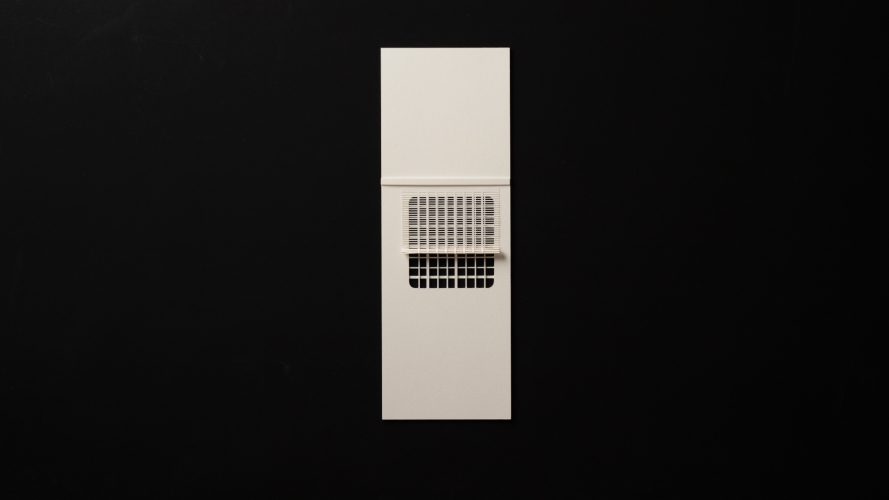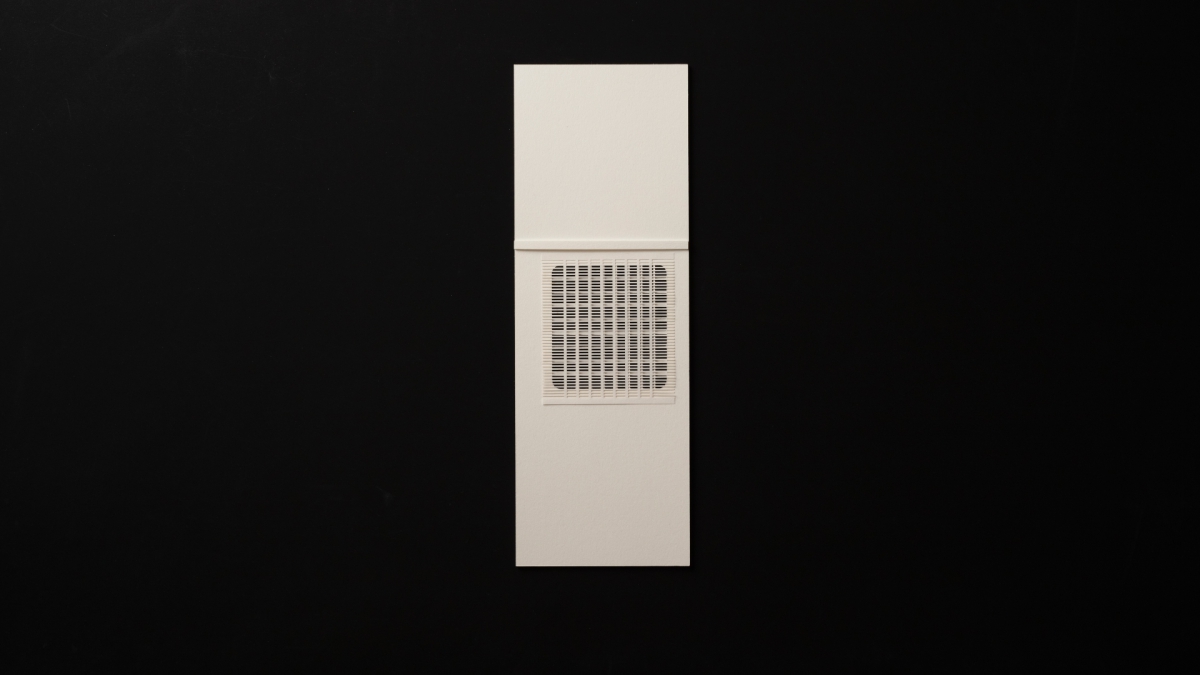
018
13 Bokusekimado
A bokusekimado (lit. “brushwork window”), also known as a hanaakarimado (lit. “flower lighting window”) or an oribemado (lit. “Oribe window”), is a type of window in the side wall within the decorative alcove, and it is named based on its location. It serves to bring light inside to improve visibility of the calligraphy work and flowers displayed in the alcove.post. The threshold and lintel have a groove for a sliding paper screen, which is pulled towards the kitchen end and opens only about half way.
About the Yosuitei
Japanese teahouses (chashitsu) are unique buildings with small interiors and many types of windows. The Yosuitei is a thatched hut-style teahouse from the Kanei era (1624–1644) of the early Edo period. It was commissioned by Toshitsune Maeda, the second lord of the Kaga Domain, and built alongside a waiting shelter and a reception hall with a dais at the residence of Kakujo Goto, a sword engraver and Maeda clan liege based in Kyo (present-day Kyoto). Designed by Enshu Kobori, the multiwindowed teahouse is also referred to as the Jusansoseki (lit. “Thirteen-Window Tearoom”) based on the fact that it has thirteen windows, which is the most of any extant teahouse. This project aims to extract the subtle, rich behaviors of the Yosuitei’s thirteen windows by studying the sounds and movements that they make when opened and closed.
13 墨蹟窓
墨蹟窓(ぼくせきまど)は、窓の位置による名称のひとつで、花明かり窓・織部窓とも言われ、床の間の内の脇壁に開けられた下地窓のこと。床に掛けた墨蹟や花を見やすくするため外光を採り入れる目的で設けられたものである。
擁翠亭について
日本の茶室は狭い空間に多くの種類の窓を備えた特殊な建築物である。擁翠亭は、江戸時代前期の寛永年間(一六二四~一六四四)に、加賀藩二代藩主前田利常が、京の装剣金工師で前田家の家臣であった後藤覚乗の屋敷に、上段付きの書院や堂腰掛とともに建てた草庵茶室。設計は小堀遠州。十三の窓を持つ多窓茶室であったことから、別名を「十三窓席」と言い現存する茶室で最も窓の多い茶室として知られている。本プロジェクトでは、擁翠亭の窓の開閉する音と動きを観察し、十三窓の繊細で豊かな振る舞いを抽出することを目的としている。
Project No:
018
Year:
2021-22
Credit:
Research: Yoh Komiyama
Video: Tomohiro Okazaki
Sound Analysis: INVISI
Production: Window Research Institute
Special Assistance: Yosuitei Preservation Society
Translation: Gen Machida

